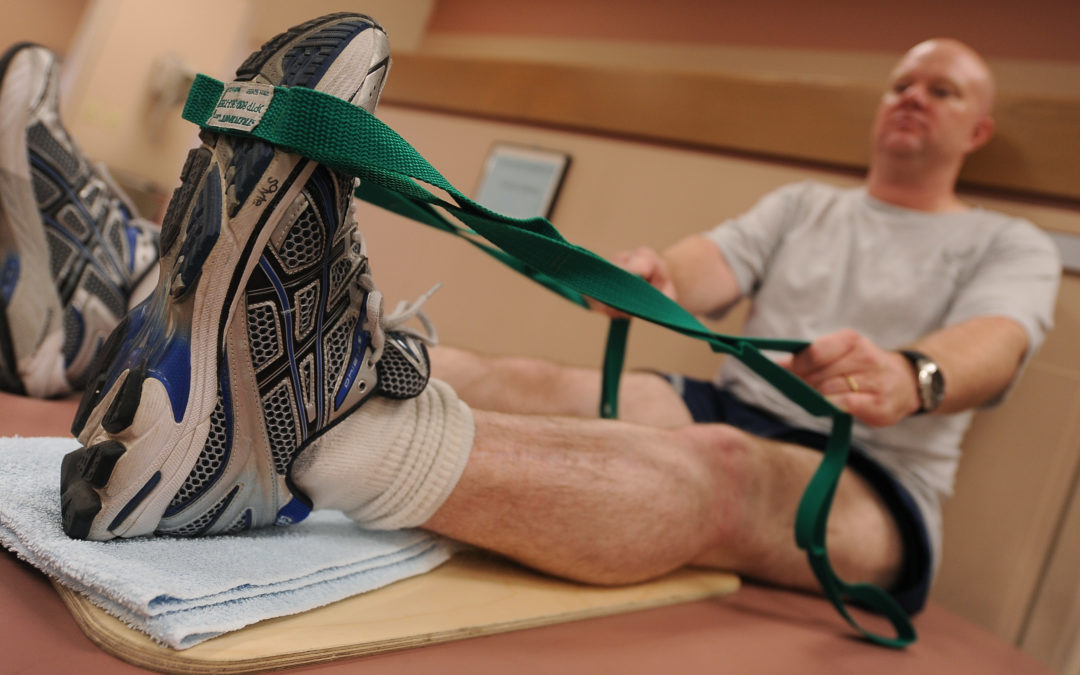Immediate Effects of Ankle Joint Mobilization With Movement on Postural Control, Range of Motion, and Muscle Strength in Healthy Individuals: A Randomized, Sham-Controlled Trial.
Tomruk M, Tomruk MS, Alkan E, Gelecek N. J Sports Rehabil. 2019 doi.org/10.1123/jsr.2019-
https://journals.humankinetics.com/view/journals/jsr/aop/article-10.1123-jsr.2019-0198.xml
Take-Home Message
A single bout of ankle joint mobilization with movement did not improve dorsiflexion range of motion or strength among healthy individuals; however, it may improve postural control.
Summary
A person needs proper joint range of motion to minimize the risk of injury and optimize performance. Many clinicians deploy the Mulligan’s technique using mobilization with movement to increase range of motion and improve balance. Evidence supports the use of these techniques in patients with a history of ankle sprains to improve both range of motion and postural control; however, it is unknown if the same improvements can be achieved in a healthy person. The authors conducted a randomized controlled trial comparing a single session of mobilization with movement on the distal tibiofibular joint to a sham condition on postural control, range of motion, and strength among 40 healthy adults (18-35 years, 20 females). Postural control was measured using the limits of stability test (a high score = better postural control). Dorsiflexion range of motion was assessed with the weight-bearing lunge test and strength was measured with a hand-held dynamometer. Researcher #1, who was blinded to the treatments, collected baseline measures. Researcher #2, who was unaware of the baseline results, applied one set of 10 repetitions of the mobilization or sham treatment to both ankles. Participants repeated the baseline testing with Researcher #1. The mobilization with movement group improved postural control in the forward-right direction of the limits of stability test more than the sham group. The authors found no other differences between the two groups.
Viewpoints
The objective of joint mobilizations is to improve range of motion deficits; however, the authors included people without dorsiflexion deficits, which may explain why range of motion failed to improve. Further, only a single bout of mobilizations was applied, and perhaps healthy individuals require more treatment sessions to observe greater improvements in range of motion and postural control. Although there was a statistically significant finding in one direction of the limits of stability test, the effect size was small, which indicated the difference in performance may not be clinically meaningful. Despite these results, there is still high-quality evidence to support the use of ankle joint mobilizations in patients with a history of ankle sprains to improve postural control and range of motion. Before implementing joint mobilizations, practitioners should assess a patient for deficits in range of motion to determine the need for this treatment. If a clinician hopes to improve human performance or reduce the risk of injury, then they should assess the effect of joint mobilization treatments throughout several sessions to determine the long-term effects. Furthermore, they should educate patients that they may not experience noticeable improvements after a single session. This education may help manage a person’s expectations.
Questions for Discussion
Do you use ankle joint mobilizations to improve balance in healthy individuals?
Written by: Danielle M. Torp
Reviewed by: Jeffrey Driban
Related Posts
Ankle Joint Mobilizations: What Are They Good For?
Simple Balance Test Is Able To Identify Non Contact Lower Extremity Injury Risk


